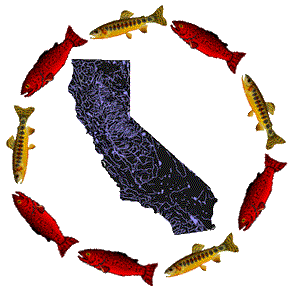CSPA
California Sportfishing Protection Alliance
“Conserving California’s Fisheries | | Home | | More News | | | “This bill’s small investment has the potential to bring in $20 million in federal funds for salmon and steelhead restoration,” Wiggins said. “The salmon industry is likely to be shut down this year and I appreciate the fact that my colleagues have taken this step toward helping restore the salmon fishery.” | | | Your 501(c)(3) tax deductible cash donations are desperately needed if the fight for our fisheries is to continue. Read how you can donate! | | | | | | | | | | | | | | | | | | | | | | | | | | | | | | | | | | | | | | | | | | | | | | | | | | | | | | | | | | | | | | | | | | | | | | | | | | | | | | | | | | | | | | | | | | | | | | | | | | | | | | | | | | | | | | | | | | | | | | | | | | | | | | | | | | | | | | | | | | | | | | | | | | | | | | | | | | | | | | | | | | | | | | | | | | | | | | | |
|  
More News
Assembly Approves Salmon Relief Bill As Fishery CollapsesBy Dan Bacher, The Fishsniffer
March 26, 2008. The California Assembly on March 24 approved Senate Bill 562, legislation by North Coast State Senator Patricia Wiggins to provide $5.3 million in “urgent funding” for salmon restoration.
The 59-11 vote took place as recreational and commercial salmon fishermen on the California and Oregon coast and recreational anglers in the Central Valley face unprecedented fishing closures, due to the collapse of the Sacramento River fall chinook salmon population.
The money is intended to assist declining salmon populations by funding habitat restoration projects that improve cover, spawning gravel and pool habitat, remove barriers to fish passage and reduce or eliminate erosion and sedimentation impacts.
“SB 562 is about this legislature taking action to protect California’s $100 million dollar salmon industry,” said Assemblywoman Patty Berg (D – Eureka), who presented the bill on the floor of the Assembly.
The Wiggins bill would allocate $5.3 million dollars from Proposition 84 bond funds to the Department of Fish and Game’s Fishery Grant Restoration Program. SB 562 will also allow the state to leverage up to $20 million federal dollars for salmon this spring, according to Senator Wiggins.
“This bill’s small investment has the potential to bring in $20 million in federal funds for salmon and steelhead restoration,” Wiggins said. “The salmon industry is likely to be shut down this year and I appreciate the fact that my colleagues have taken this step toward helping restore the salmon fishery.”
The impact of the salmon fishing closure is expected to be devastating to an already beleaguered fishing industry and the economies of coastal and inland communities that depend on the money generated from salmon fishing.
“The salmon industry is more than just fishermen – it is tackle shops, processors, ice suppliers, restaurants, and tourism,” Wiggins added. “This is a small investment to help that industry.”
Zeke Grader, executive director of The Pacific Coast Federation of Fishermen’s Associations, said his organization supports the legislation, but wasn’t involved in drafting the bill.
John Beuttler, conservation director of the California Sportfishing Protection Alliance, is backing the legislation also.
“Our organization supports the bill in concept because we need immediate actions taken to save our salmon populations,” explained Beuttler. “The bill provides over $5 million for habitat restoration on coastal rivers. We’d like to see coastal Chinook and Coho populations restored and this is a good start.”
"We back this bill, but more is needed to fix salmon habitat problems on the Eel and other rivers," said Jim Martin, West Coast Regional Director of the Recreational Fishing Alliance.
Although I support any measures to restore salmon populations, it unfortunate that the bill doesn’t address the main problems that have driven the once robust Central Valley salmon stocks into a state of collapse. Unfavorable ocean conditions have definitely played a role in the collapse, but biologists, commercial fishermen, recreational anglers, environmentalists and Indian Tribes point to increasing water exports out of the California Delta to subsidized agribusiness and southern California and declining water quality in Central Valley rivers as key factors behind the decline.
Unless water exports, water quality and other inland problems are addressed by the state and federal governments, the Sacramento River chinook salmon run and Delta fish populations will continue on the path towards extinction. |
|
|
|